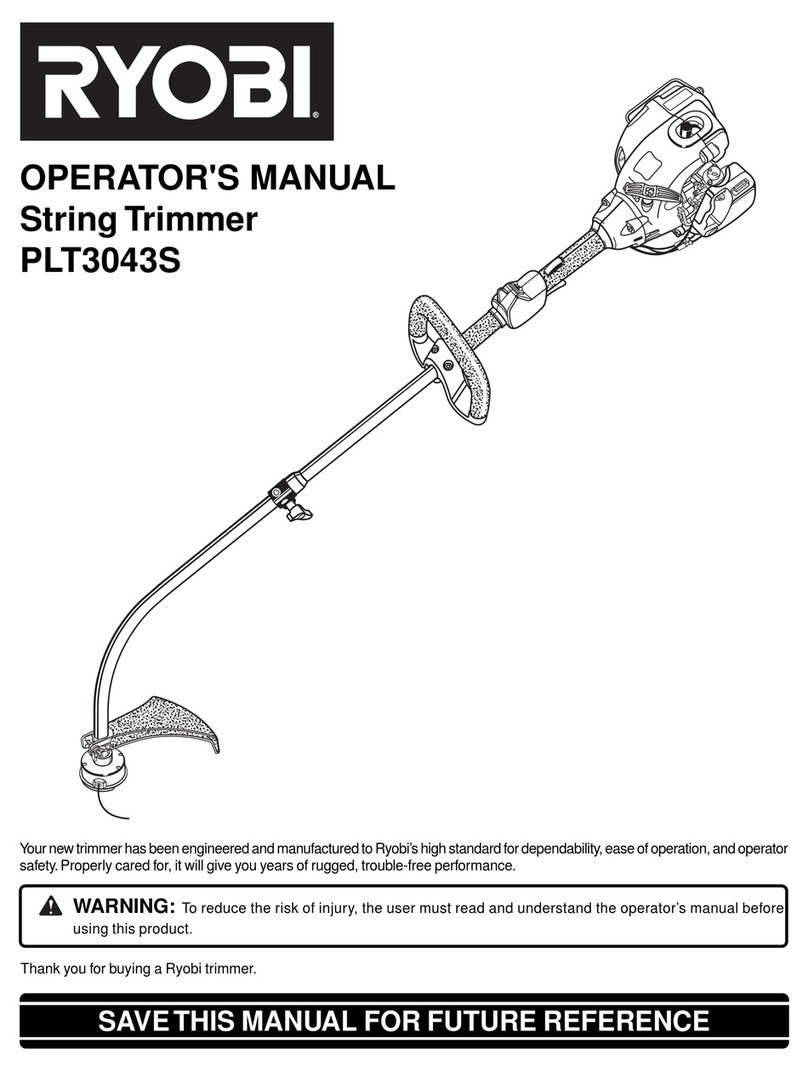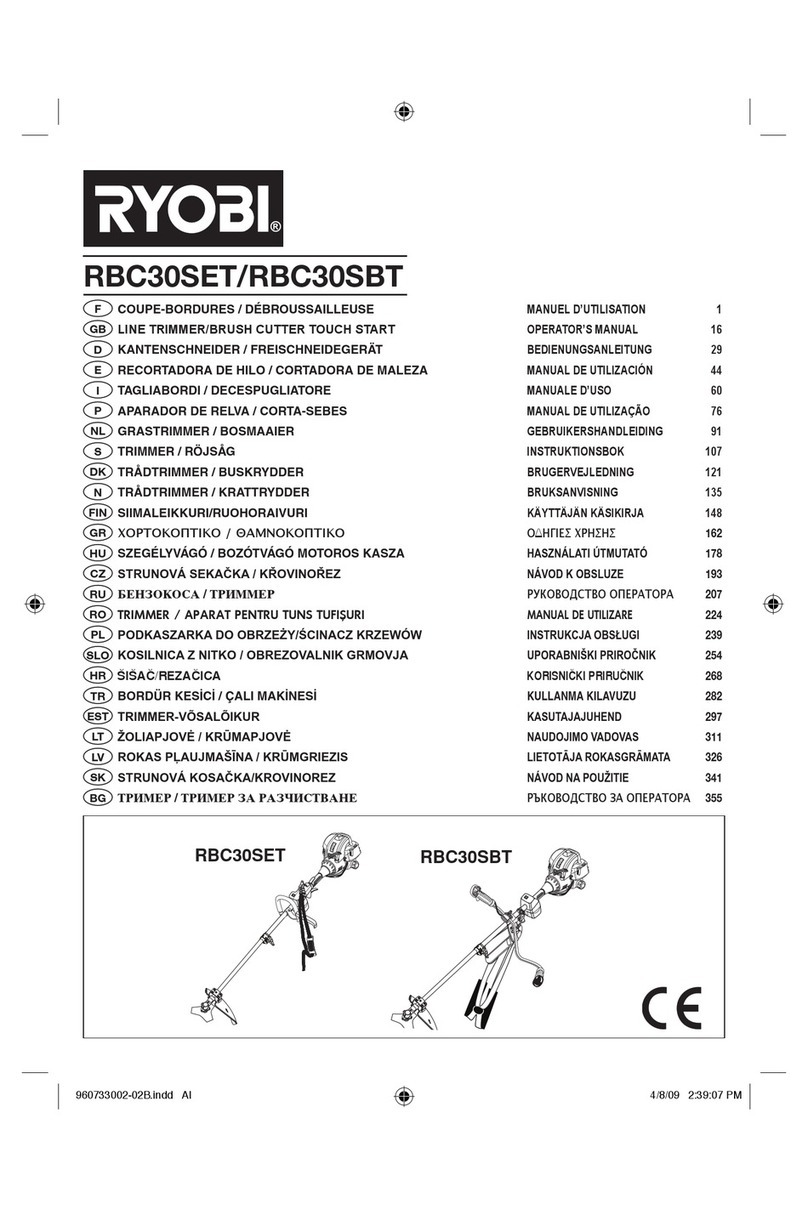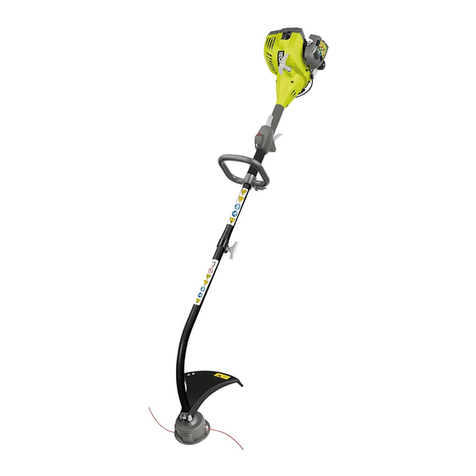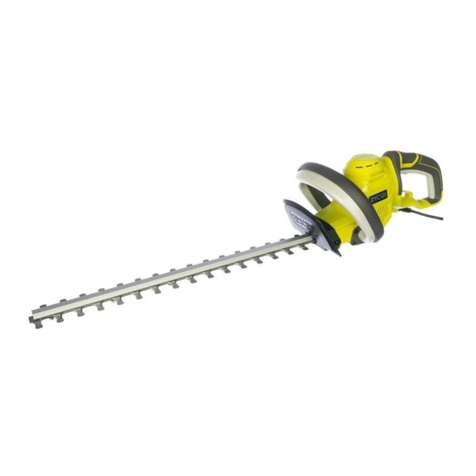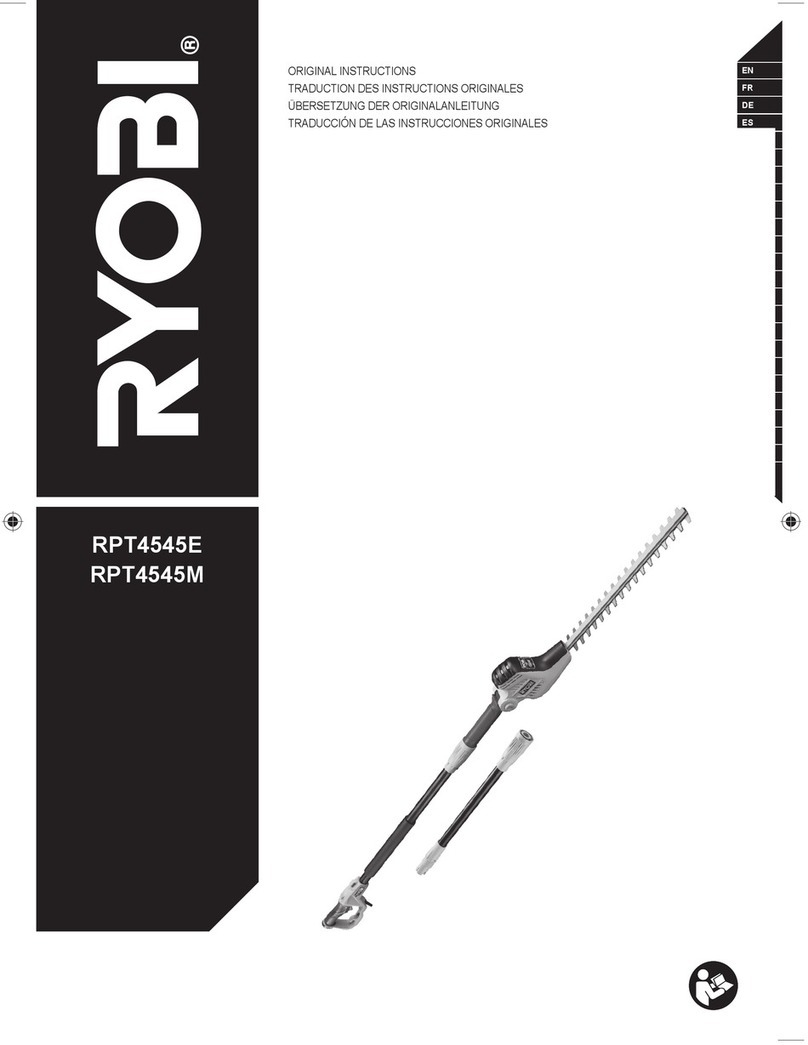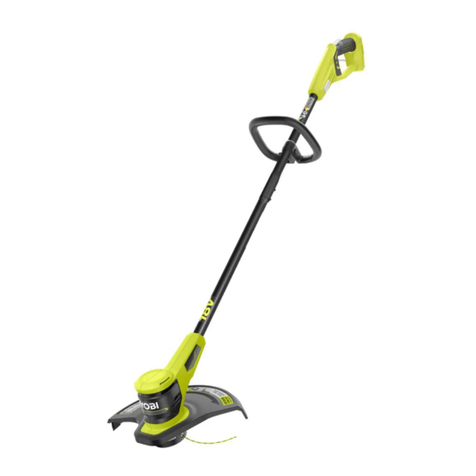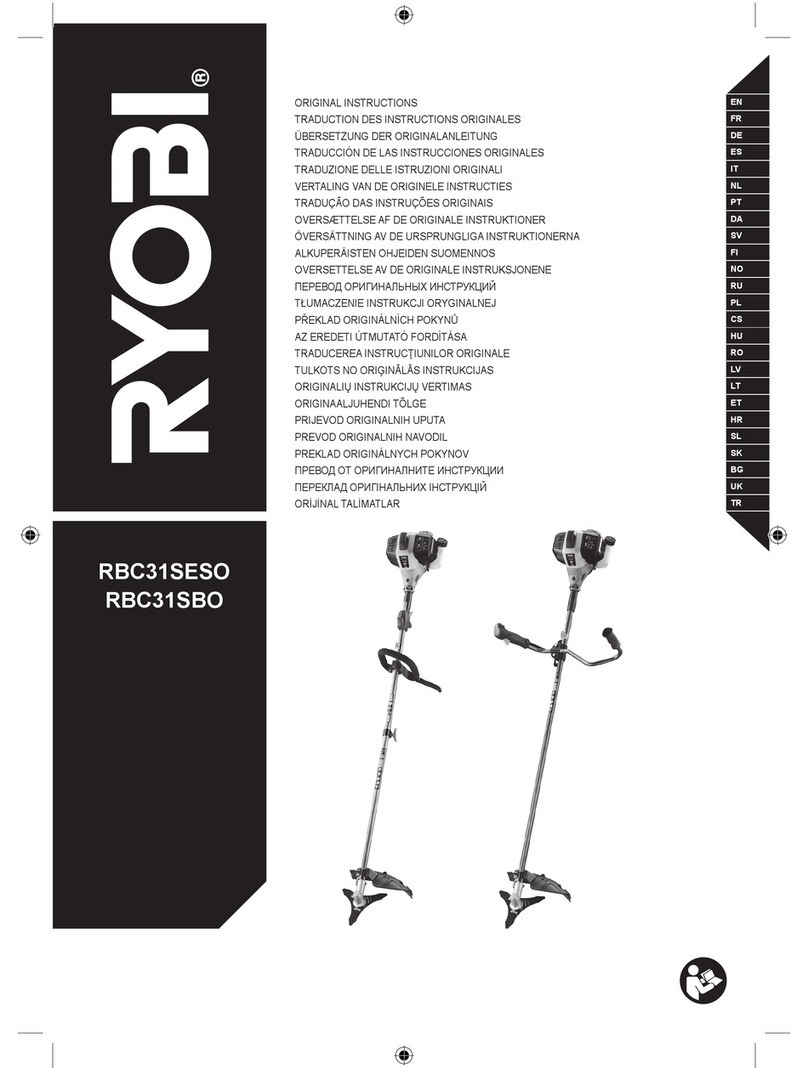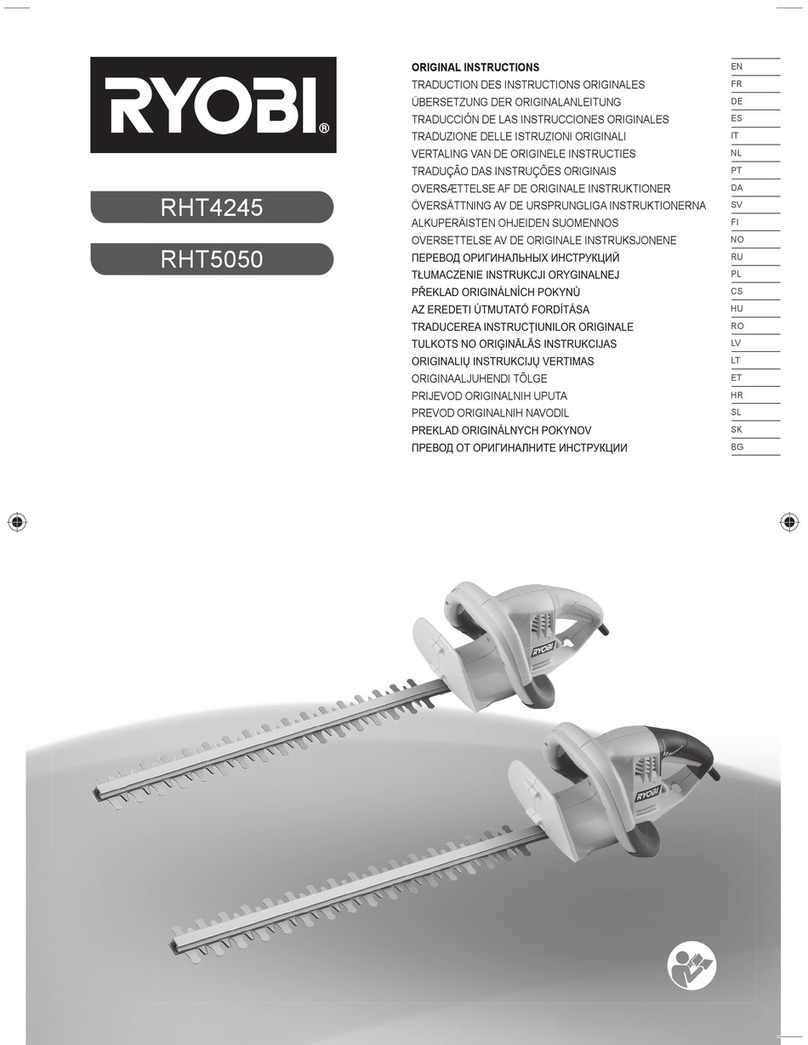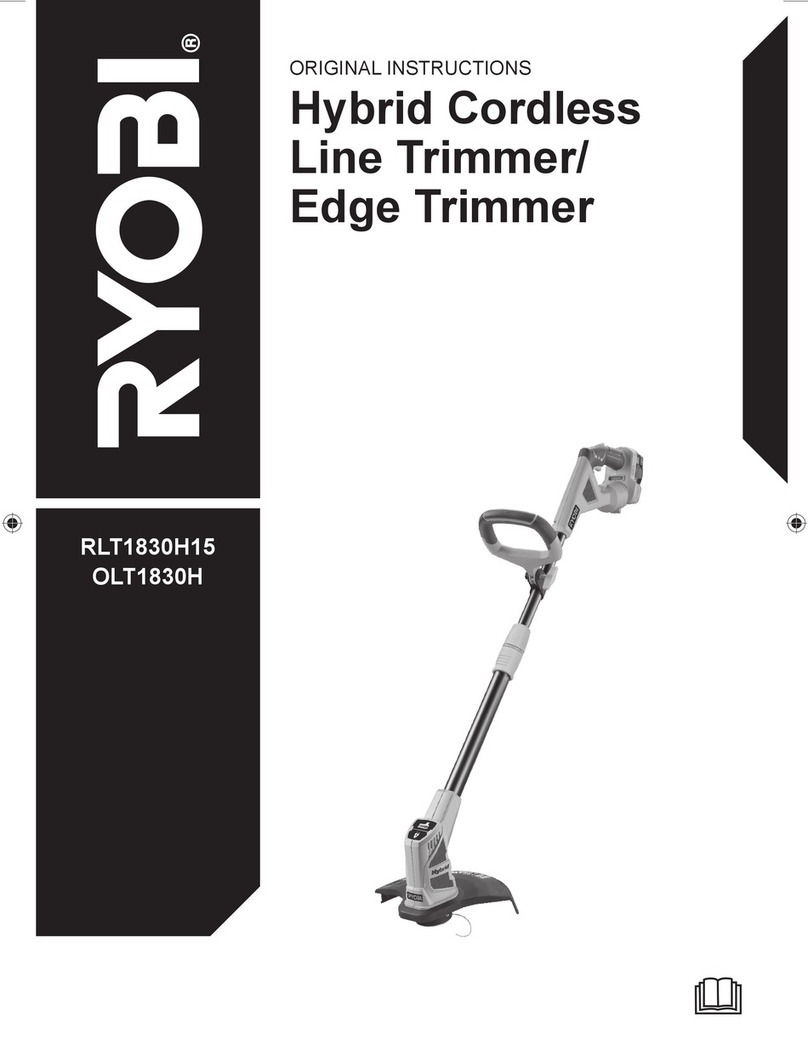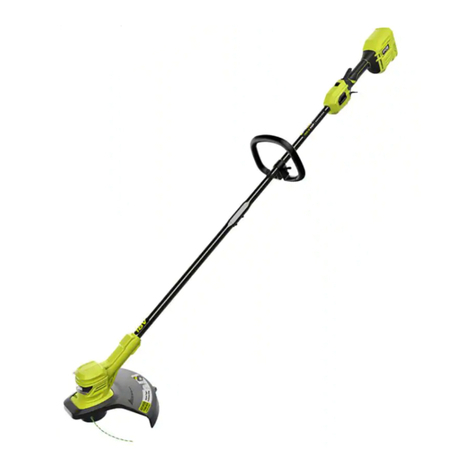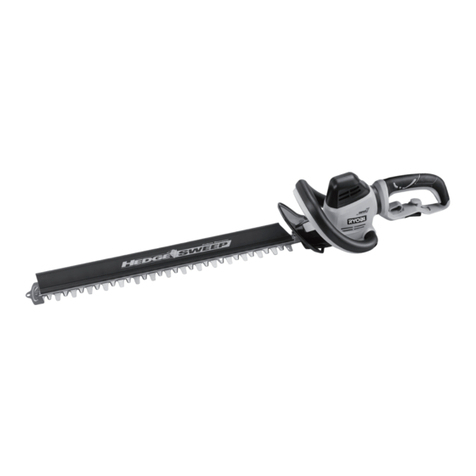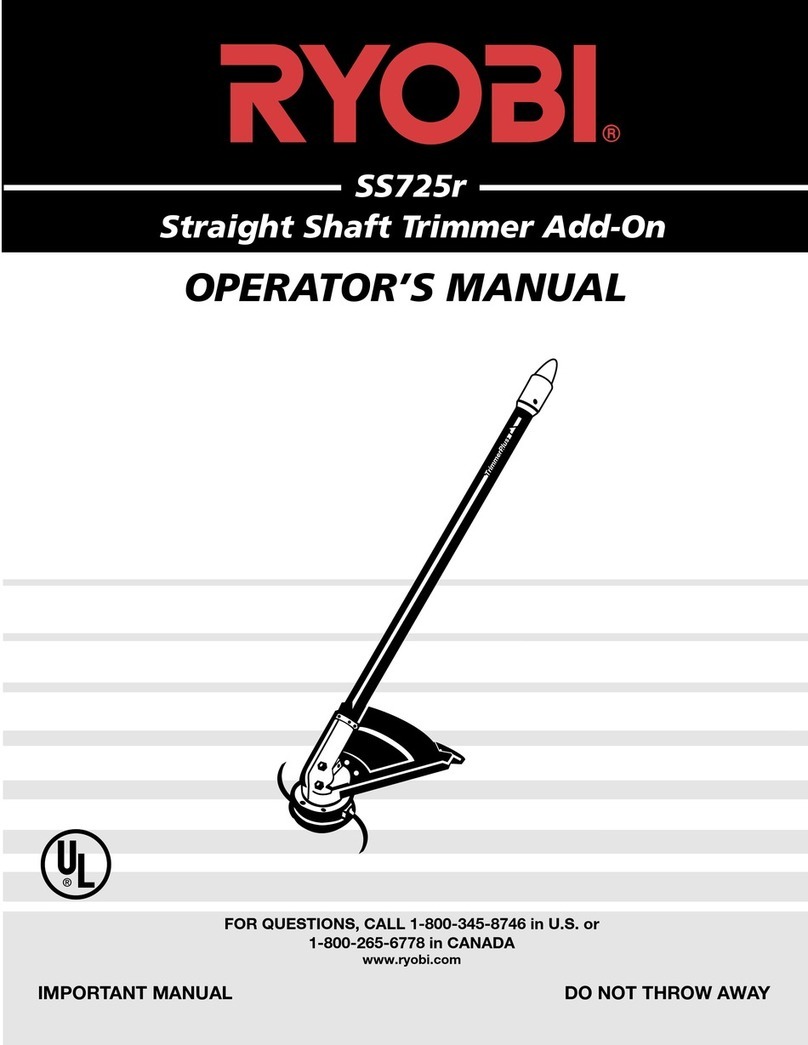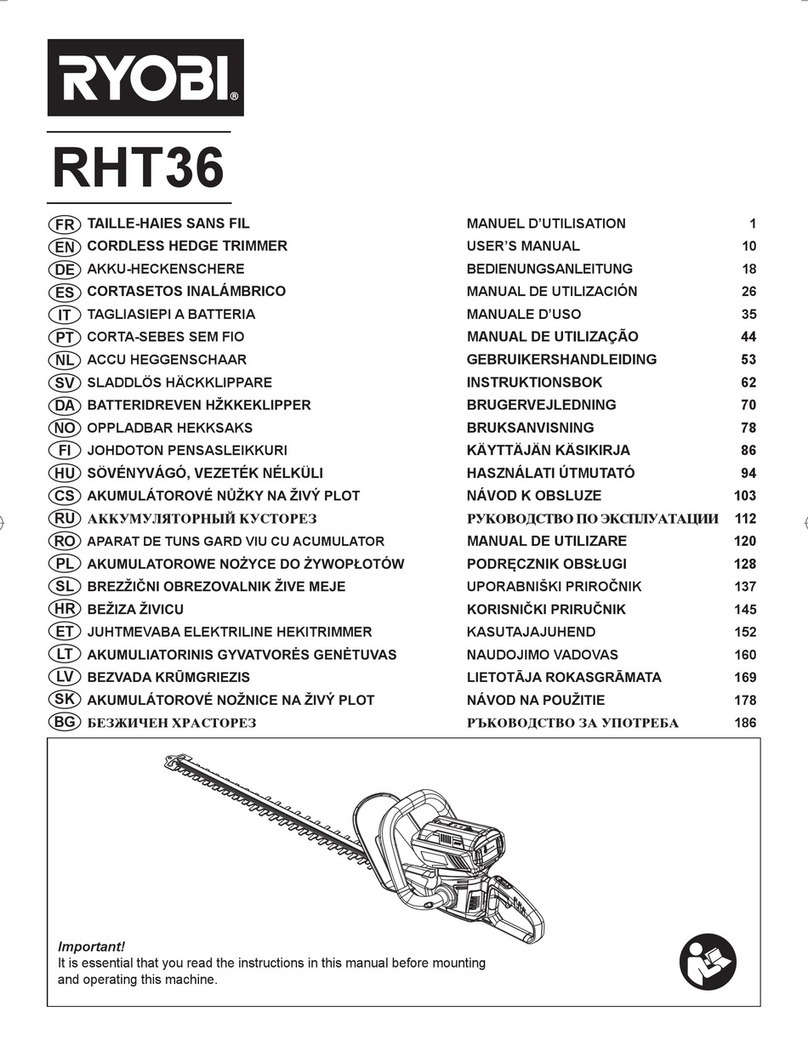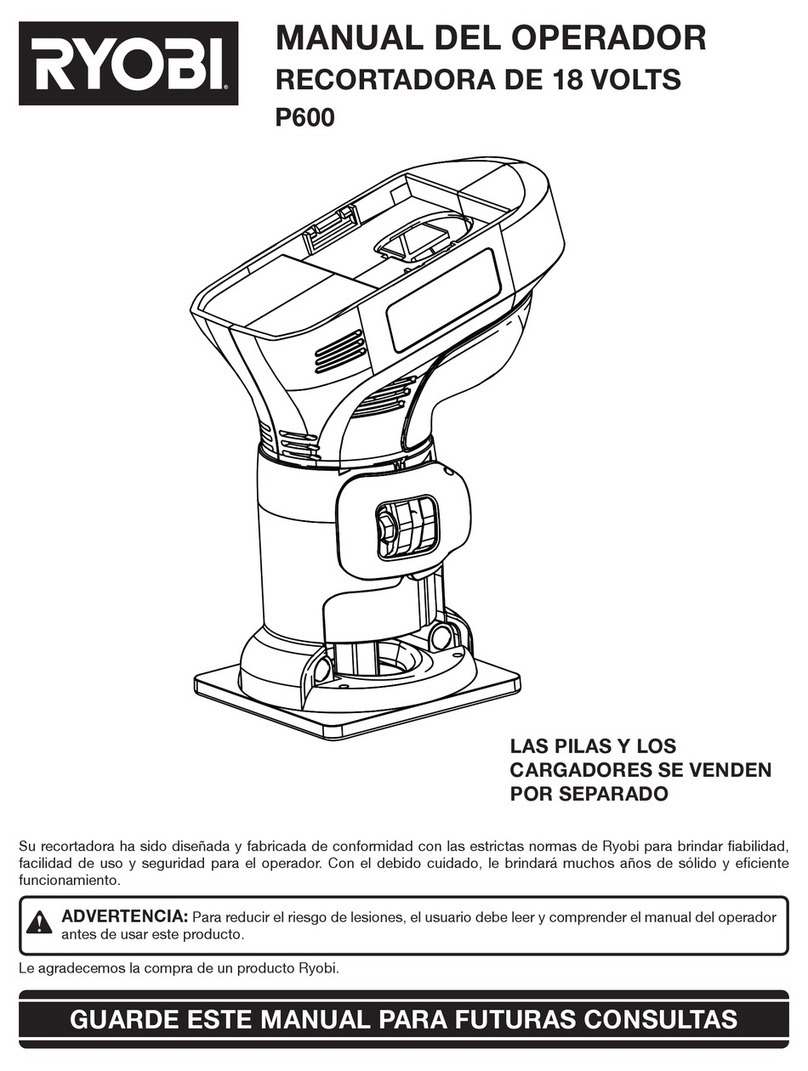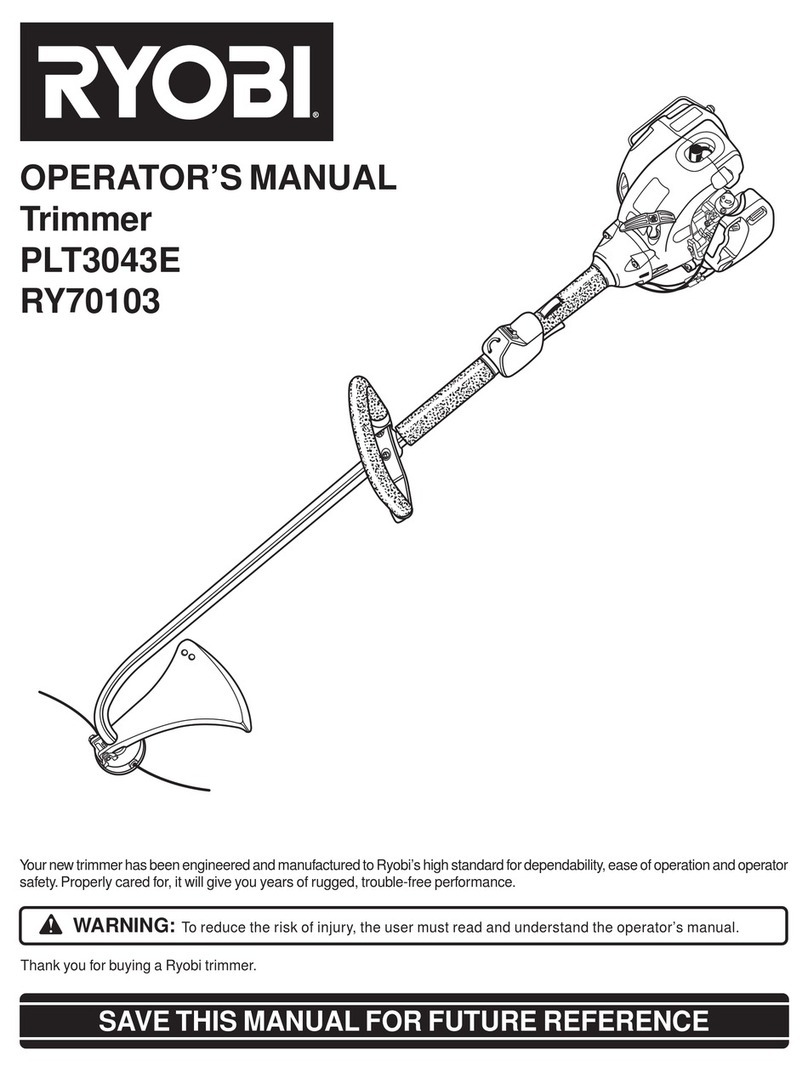
2
Français
FGB D E I P NL SDK NFIN GR HU CZ RU RO PL SLO HR TR EST LT LV SK BG
FGB D E I P NL SDK NFIN GR HU CZ RU RO PL SLO HR TR EST LT LV SK BG
CONSIGNES DE SÉCURITÉ
CONSIGNES LORS DE L'UTILISATION DU COUPE-
BORDURES
■N'utilisez pas votre coupe-bordures si la poignée
avant n'est pas en place. Tenez votre outil à deux
mains lorsque vous l'utilisez.
■Pour éviter les risques de démarrage involontaire,
ne déplacez pas votre outil en ayant le doigt sur
la gâchette.
■Restez vigilant. Regardez bien ce que vous faites
et faites preuve de bon sens.
■N'utilisez pas cet outil dans une zone mal éclairée.
Veillez à ce que votre espace de travail soit
bien éclairé (lumière du jour ou lumière artificielle).
■Veillez à toujours garder votre équilibre et n'utilisez
pas votre outil sur un support instable. Prenez bien
appui sur vos jambes et ne tendez pas le bras
trop loin. N'utilisez pas votre outil sur une échelle.
■Ne forcez pas l'outil. Votre outil sera plus efficace et plus
sûr si vous l'utilisez au régime pour lequel il a été conçu.
■Tenez toujours votre outil à deux mains lorsque vous
l’utilisez. Veillez à le tenir fermement par les deux
poignées (avant et arrière).
■Relâchez la gâchette, attendez que le moteur s'arrête
complètement puis retirez la batterie avant de nettoyer
votre outil, de le réparer ou d'effectuer des réglages.
■Ce coupe-bordures a été conçu pour couper de l’herbe
ou des broussailles et pour effectuer des travaux
de finition. Ne l’utilisez pas comme dresse-bordures.
■Avant de mettre votre outil en marche, assurez-vous
que la tête de fil ne rencontrera aucun obstacle.
■Si le coupe-bordures heurte un obstacle ou si un
objet se prend dans la tête de fil, arrêtez
immédiatement votre outil, retirez la batterie et
vérifiez qu'aucune pièce n'est endommagée.
N'utilisez pas votre outil avant d'avoir effectué les
réparations requises. N'utilisez pas votre outil si des
pièces ne sont pas correctement fixées ou si elles
sont endommagées.
■Tenez-vous éloigné de la tête de fil et autres pièces
en mouvement. Ne touchez pas ou n’essayez pas
d’arrêter la tête de fil à la main alors qu’elle est
en rotation.
■Veillez à maintenir la tête de fil en dessous du niveau
de votre taille.
■Arrêtez toujours le moteur lorsque vous n'êtes pas en
train de couper ou lorsque vous vous déplacez d'une
zone de coupe à une autre.
■Le déflecteur d’herbe doit toujours être en place
lorsque vous utilisez votre coupe-bordures. N’utilisez
pas votre coupe-bordures si le fil de coupe n’est pas
adapté et s’il n’est pas correctement sorti. Ne sortez
pas le fil au-delà du bord du déflecteur d’herbe.
■Ne laissez pas des déchets de coupe ou autres
matériaux s'accumuler sur l'outil. Ils pourraient venir
se loger entre la tête de fil et le déflecteur d’herbe.
■Rangez votre outil dans un endroit sec, situé en
hauteur ou fermé à clé, pour éviter toute utilisation
abusive ou tout endommagement. Veillez à ce que
votre outil soit rangé hors de portée des enfants et
des personnes inexpérimentées.
■Ne plongez jamais votre outil dans l'eau ou dans tout
autre liquide et ne l'aspergez pas. Veillez à ce que les
poignées soient toujours sèches et propres,
sans déchet de coupe. Nettoyez votre outil après
chaque utilisation : reportez-vous aux consignes des
sections "Nettoyage du coupe-bordures" et
"Rangement du coupe-bordures".
■Assurez-vous que les pièces de l'outil sont
correctement serrées avant de le transporter.
■Conservez ces instructions. Consultez-les
régulièrement et utilisez-les pour informer d'autres
utilisateurs éventuels. Si vous prêtez votre coupe-
bordures, prêtez également ce manuel d'utilisation.
RÉPARATIONS
■Les réparations doivent être effectuées par un
technicien qualifié uniquement. L’entretien ou les
réparations réalisées par des personnes non
qualifiées entraînent des risques de blessures
corporelles graves ou d'endommagement de l'outil.
Le non-respect de cette consigne rend votre garantie
nulle et caduque.
■Lors de réparations, seules des pièces de rechange
d'origine doivent être utilisées. Respectez les
instructions figurant dans la section "Entretien et
réparations" de ce manuel. Vous éviterez ainsi les
risques de chocs électriques, de blessures
corporelles graves ou d'endommagement de l'outil.
Le non-respect de cette consigne rend votre garantie
nulle et caduque.
CONSIGNES DE SÉCURITÉ SPÉCIFIQUES AUX
OUTILS SANS FIL
■Assurez-vous que l'interrupteur est en position "arrêt"
ou verrouillé avant d'insérer la batterie. L'insertion
d'une batterie dans un outil en position marche peut
provoquer des accidents.
OLT-1823_25 lgs 12/09/06 13:59 Page 2
